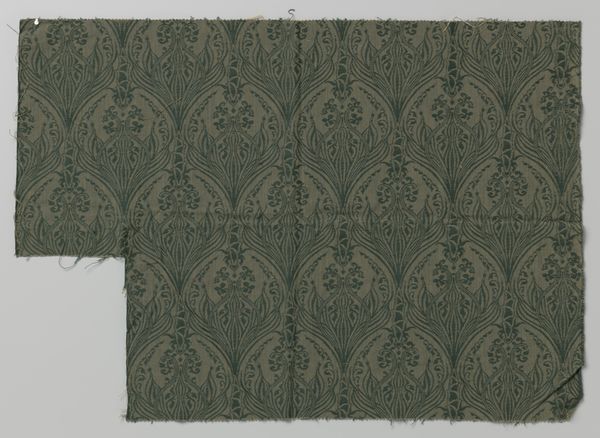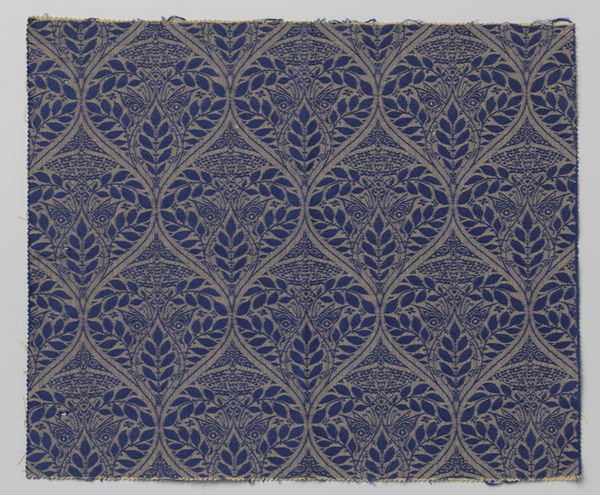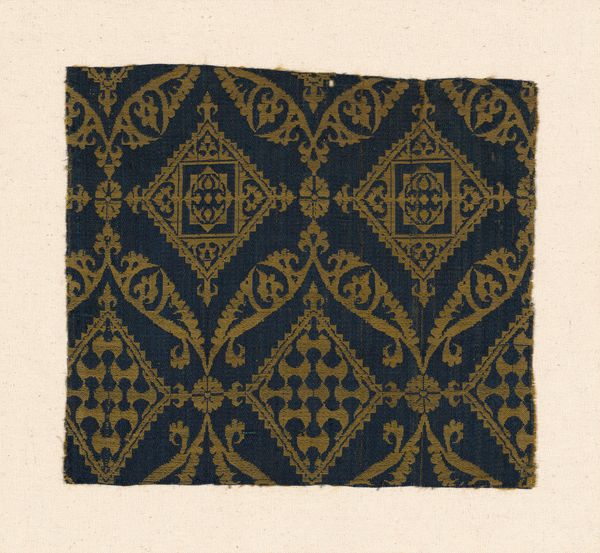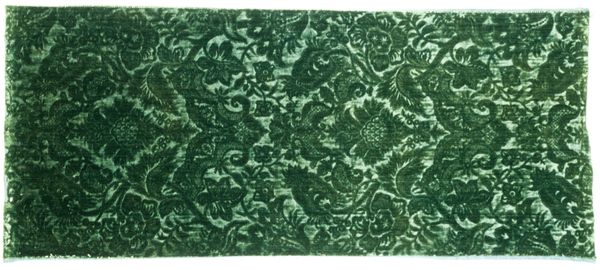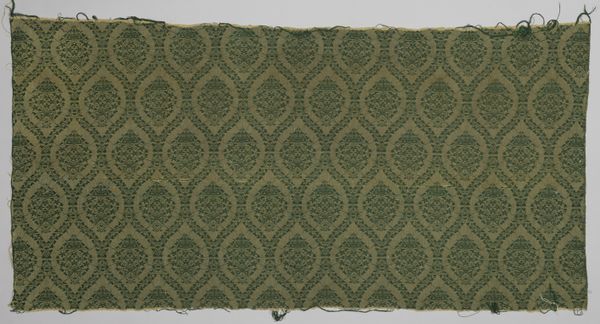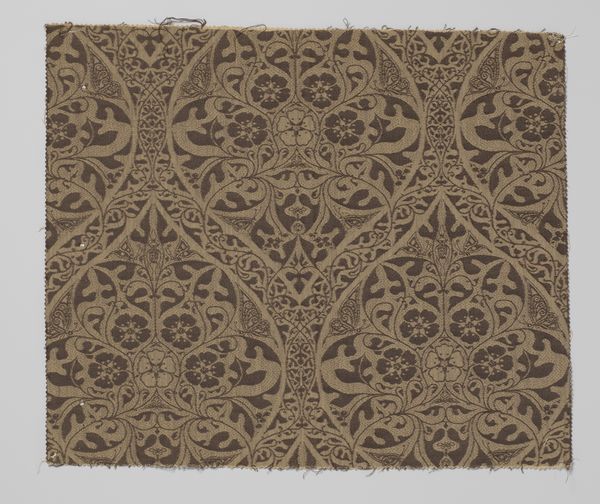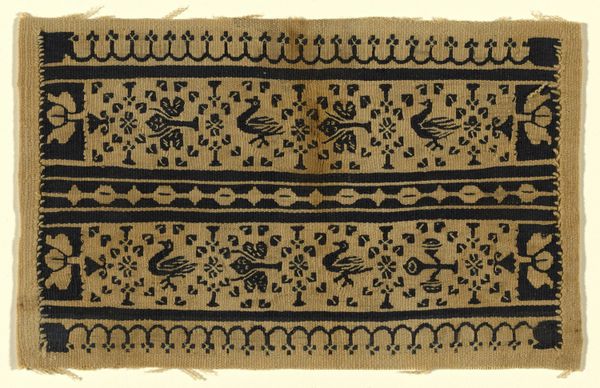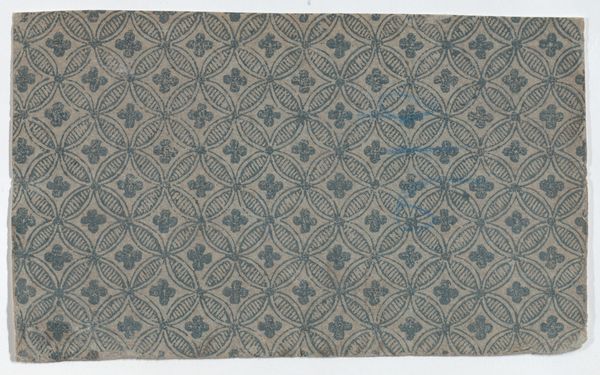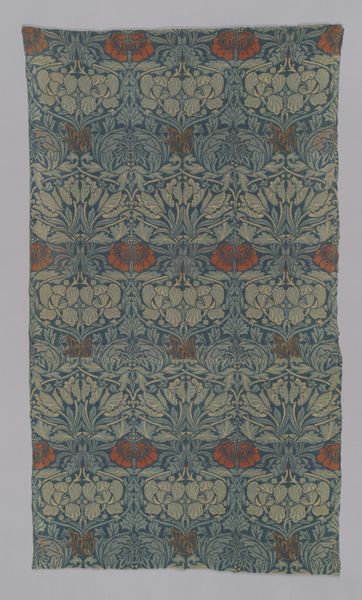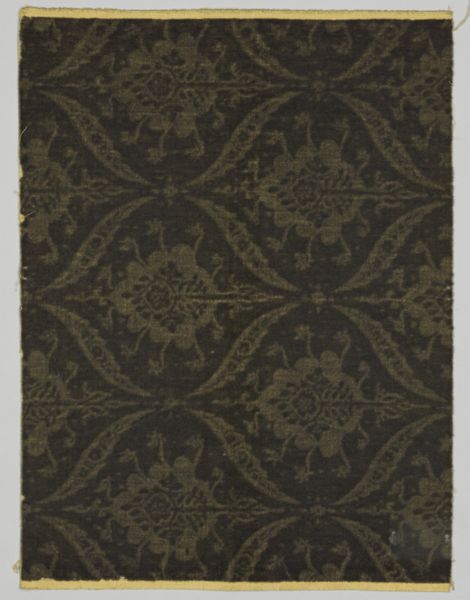
fibre-art, weaving, textile
#
fibre-art
#
medieval
#
pattern
#
weaving
#
textile
#
geometric
#
fabric design
#
islamic-art
#
textile design
#
decorative-art
Dimensions: 20.8 × 38.2 cm (8 1/4 × 15 in.) Weft repeat: 14.2 cm (5 5/8 in.)
Copyright: Public Domain
This textile fragment, of unknown origin and date, is made of woven silk. The elaborate repeat pattern, with its mirrored palmettes and stylized floral motifs, would have required a drawloom to produce. Looking closely, you can appreciate the material qualities of the silk. Note its subtle sheen, the way it catches the light, and the tight weave structure, giving crispness to the pattern. But remember, this fragment is just a snippet of something that would have been far larger and more impressive. It's not just the aesthetic qualities of this textile that are important, but also the social and economic context of its production. Silk was a valuable commodity, and the labor-intensive process of weaving it meant that it was often associated with wealth and status. By appreciating the material and making of this fragment, we can better understand the world in which it was created.
Comments
No comments
Be the first to comment and join the conversation on the ultimate creative platform.

